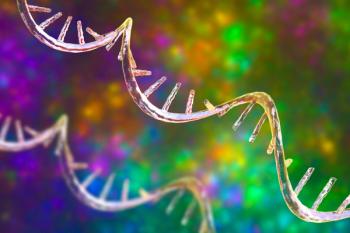
E&L Challenges in Biologics, Part One
Eric Hill, Chief Scientific Officer, BA Sciences, discusses the analytical challenges involved in conducting E&L testing for biologic drug products.
Pharmaceutical Technology® Group spoke with Eric Hill, Chief Scientific Officer, BA Sciences, at
According to Hill, when it comes to analytical challenges, the leachables part of E&L testing is where the challenges reside. During the extractables part of E&L testing, the packaging of the product is being tested and evaluated to come up with an “extractables profile” to determine if anything could leach out of the packaging, which then becomes a “leachable”.
“When we do leachables testing, we're testing the actual drug product for what has leached. And those drug product matrices are where the challenge exists,” Hill says. "When we talk about a large-molecule drug product, it's usually something that's protein in solution, cell culture, media, or any form of large molecule-type matrices, which is not something we can analyze directly. We need to somehow prepare that and further evaluate it for leachables that are inside. That's the real challenge."”
The unique chemistry properties of biologic drugs may affect the leachable uptake in comparison with traditional small-molecule pharmaceuticals.
“Those drug product matrices [of biologics], whether it be a tissue, a blood cell culture media, or even just a protein solution, present a very complex matrix that has very complex chemistry,” Hill explains. “That complex chemistry is going to uptake those leachables in a much different way than would a traditional small-molecule drug product, which is much simpler, in either a simple matrix or maybe with some excipients. That chemistry is going to uptake leachables in a much different way. That's what needs to be evaluated when we do leachables testing.”
For more coverage of AAPS PharmSci 360 2025, visit
Transcript
Editor's note: This transcript is a lightly edited rendering of the original audio/video content. It may contain errors, informal language, or omissions as spoken in the original recording.
My name is Eric Hill. I currently serve as the chief scientific officer for BA Sciences, and in that role, I guide the overall technical aspects of our small molecule side of the testing business. And [I’ve been with] BA Sciences for 10 years, and I started out in the business as the director of the extractable Lee schools laboratory. And as far as the industry, I currently speak at various industry conferences and serve, as you know, a subject matter expert. And I also recently accepted a role on the packaging expert committee for the USP. And so that's a five year cycle. Just started in 2025 to go through 2030 and we're responsible for authoring, revising, and shepherding through the extractable, leachable shepherds for the USP.
What specific analytical challenges do biologic drug matrices present when conducting E&L testing?
It's really in the leachable side. And just, you know, real quick for our viewers here, if you're not familiar with extractable leachables, but the extractable side is where we're testing and evaluating the packaging of the drug product. We're looking for, what's called the extractables profile, what's available in that packaging that could leach but anything that leeches out of the packaging into the drug product becomes a leachable and that's where the challenge really presents itself. Because when we do leachables testing, we're testing the actual drug product for what has leached. And those drug product matrices are where the challenge exists. Because when we talk about a large molecule drug product, it's usually something that's protein in solution, cell culture, media, it could be, you know, any form of, again, large molecule, type of matrices, which is not something we can analyze directly. We've got to somehow prepare that and to further evaluate it for leachables that are inside. So that's the real challenge. Is the leachable side?
How do the unique chemistry properties of biologic drug forms affect leachable uptake compared to traditional pharmaceutical products?
Yeah. So, you know, kind of expanding on the last my answer the last question. You know, again, those drug product matrices, whether it be a tissue, a blood cell culture media, as I mentioned, or even just a protein solution, you know, presents a very complex matrix that has very complex chemistry. And so that complex chemistry is going to uptake those leachables in a much different way than a traditional small molecule drug product, which is much simpler, usually a small molecule, you know, in either a simple matrix or, you know, maybe with some excipients. And so that chemistry, you know, is going to uptake leachables in a much different way. And that's what needs to be evaluated again, when we do that leachables testing.
Why is developing a specialized "guide map" crucial for the successful evaluation of extractables and leachables in complex biologic drug forms?
Yeah, it's critical. And the reason it's critical is it's about being able to accurately detect, identify and quantitate all those leachables that are in that drug product. Because, again, any leachable that is present in the drug product from its packaging is going to carry itself with the drug product into the patient when that drugs administered. So we we have the responsibility to make sure that we fully characterize that for those leachables, so we understand what's there, because that those leachables present some form of toxicity that we have to understand to make sure that drug product safe. And as I mentioned earlier, that drug product matrix is very complex to navigate, and so that's where that guide map comes in, is making sure we have a guide that guide map that matches that complexity, such that again, we can accurately identify and quantitate all of those leachables that are present.
Newsletter
Stay at the forefront of biopharmaceutical innovation—subscribe to BioPharm International for expert insights on drug development, manufacturing, compliance, and more.




